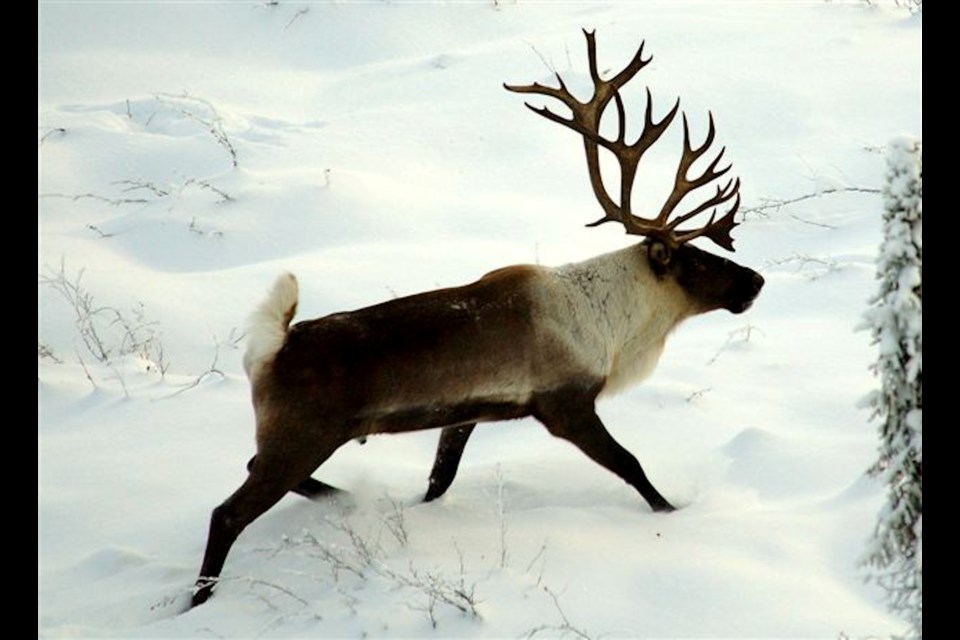The boreal caribou is an iconic Canadian symbol. It's on the 25 cent coin.
It's widely acknowledged that the caribou population is on the decline, its range having diminished by as much as 50 per cent since the late 1890s.
And it's also been posterized by environmental and conservation groups in the campaign against the natural resources sector and its practices.
"Sometimes I wonder if it's just a vehicle to shut down this industry," said Ian Dunn, president-CEO of the Ontario Forest Industries Association (OFIA), an industry trade group representing more than 40 companies in the province.
In mid-March, the Ontario government earmarked $29 million over the next four years toward caribou habitat restoration, protection and conservation.
The province heralded it as the "largest single investment dedicated to caribou in Ontario's history."
Municipal and Indigenous leaders along the Lake Superior shore, in the forest-based economy of northwestern Ontario where these caribou roam, celebrated the news.
But the shine was taken off by a Canadian Press story that federal Environment Minister Steven Guilbeault was prepared to recommend to cabinet that a protection order be placed in Ontario to protect caribou habitat. This was, reportedly, after his provincial counterpart, Ontario Environment Minister David Piccini, advised Guilbeault of the coming investment.
What that order would entail, how far it would go and what areas of the province would be impacted remain to be been. But it would likely apply to the caribou range along the north shore of Lake Superior, further north into the Hudson Bay lowlands, west to the Manitoba border and east to the boundary with Quebec.
"It would be economic devastation," said Dunn, of the potential impact to harvesting and forest product mill operations in the northwest.
Dunn called Guilbeault's tone and approach “quite dangerous.”
According to a Montreal media report, a similar warning letter was sent to Quebec Environment Minister Benoit Charette.
Dunn said he’s concerned this kind of federal intervention could impact other industries, such as prohibiting mining in the Ring of Fire.
The boreal caribou is listed by the federal and provincial governments as a threatened species, meaning it is likely to become endangered if steps are not taken to address the various factors threatening it.
The province estimates there are 5,000 boreal caribou in Ontario. The rest roam through the boreal forest from the Northwest Territories to Labrador and Newfoundland.
The fight by NGOs and past provincial governments to better protect caribou habitat has lasted for decades.
OFIA has countered against more restrictive measures, arguing to the former McGuinty and Wynne governments that caribou and other species at risk in Ontario already have legislatively built-in protections within Crown forest management plans. Forest industry towns have historically protested tougher legislation.
“We have a 33-year history of managing caribou in this province,” said Dunn, who calls Ontario a leading jurisdiction for caribou habitat restoration.
He chafes at recent criticism by environmental activists that Ontario's forest sector needs to be "reined in."
"It gives the misconception that nothing is happening in terms of caribou protection in a forestry context."
There are a number of factors that are, and could be, contributing to the decline of the caribou, an animal that requires a large amount of undisturbed area. Activities like human settlement, logging, mining, hydro line construction, road building and road traffic all count as disturbances to government.
Other factors include the efficiency of predatory animals, like wolves, disease, and forest fires, which lead to related questions about climate change and how that could impact the loss of caribou habitat.
Dunn said the industry has attempted to mitigate these disturbances through practices such as with the dynamic caribou habitat schedule, where large portions of forest are maintained for long periods of time to create interconnected corridors across the landscape to provide suitable habitat.
Additional protections are built into management plans to set aside areas for calving and nursery spaces, and winter refuge.
"Nobody wants anything bad to happen to a species at risk," said Dunn, adding there are other species across the landscape categorized as endangered or threatened that are equally important from social, economic and spiritual perspectives.
Rather than rely on the traditional exercise of counting caribou by helicopter, Dunn prefers better understanding the science behind the population and the relative health of the species.
While the Ontario government was vague on how the $29 million will be spent, Dunn said he is aware of one genetic study taking place in northwestern Ontario involving the collection of DNA samples from caribou, to give industry and government a better of how caribou in the region are faring. And there are other multi-year studies being done on caribou populations by the National Council for Air and Stream Improvement.
Dunn said the industry is interested in what it can learn from a silviculture point of view to improve nutrition on the landscape that would improve the survival rate of caribou calves.
“In that respect, forestry actually is a solution,” said Dunn.
“This misconception that you can put a glass dome over an area of boreal forest and that keep that as caribou habitat forever, nature does not work that way.”
